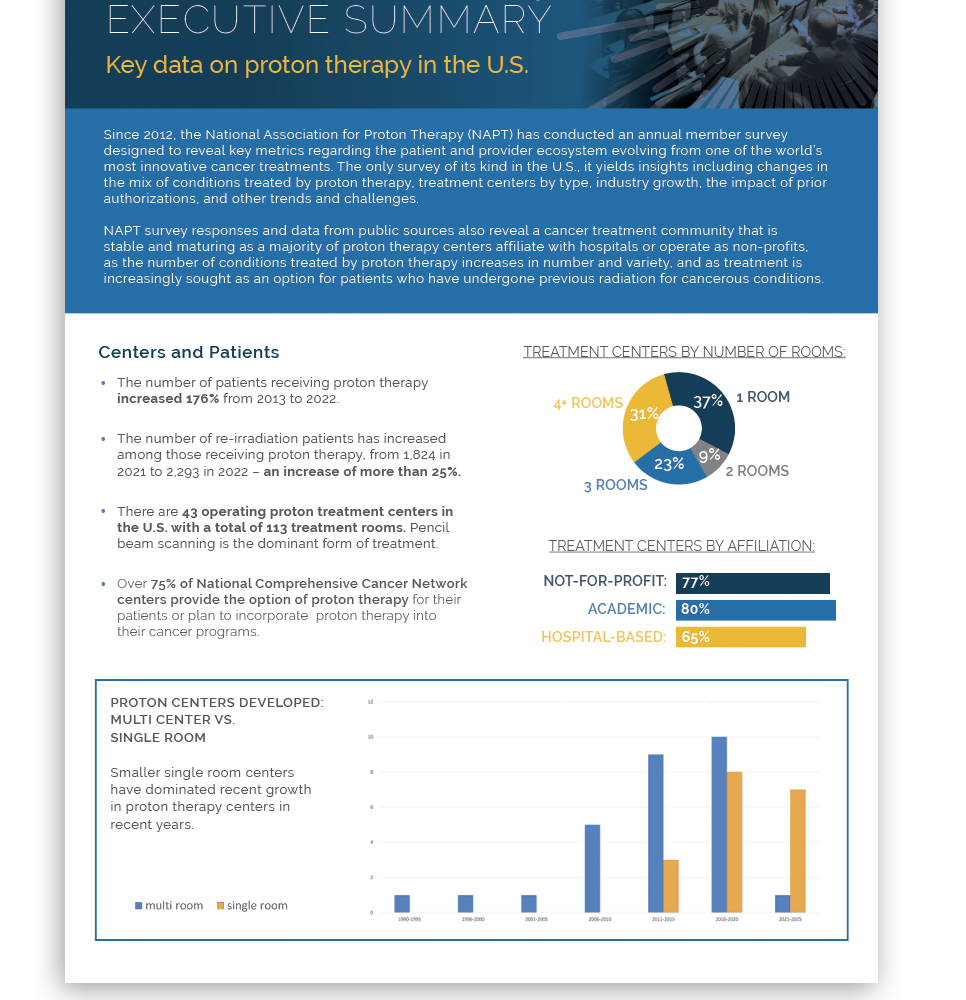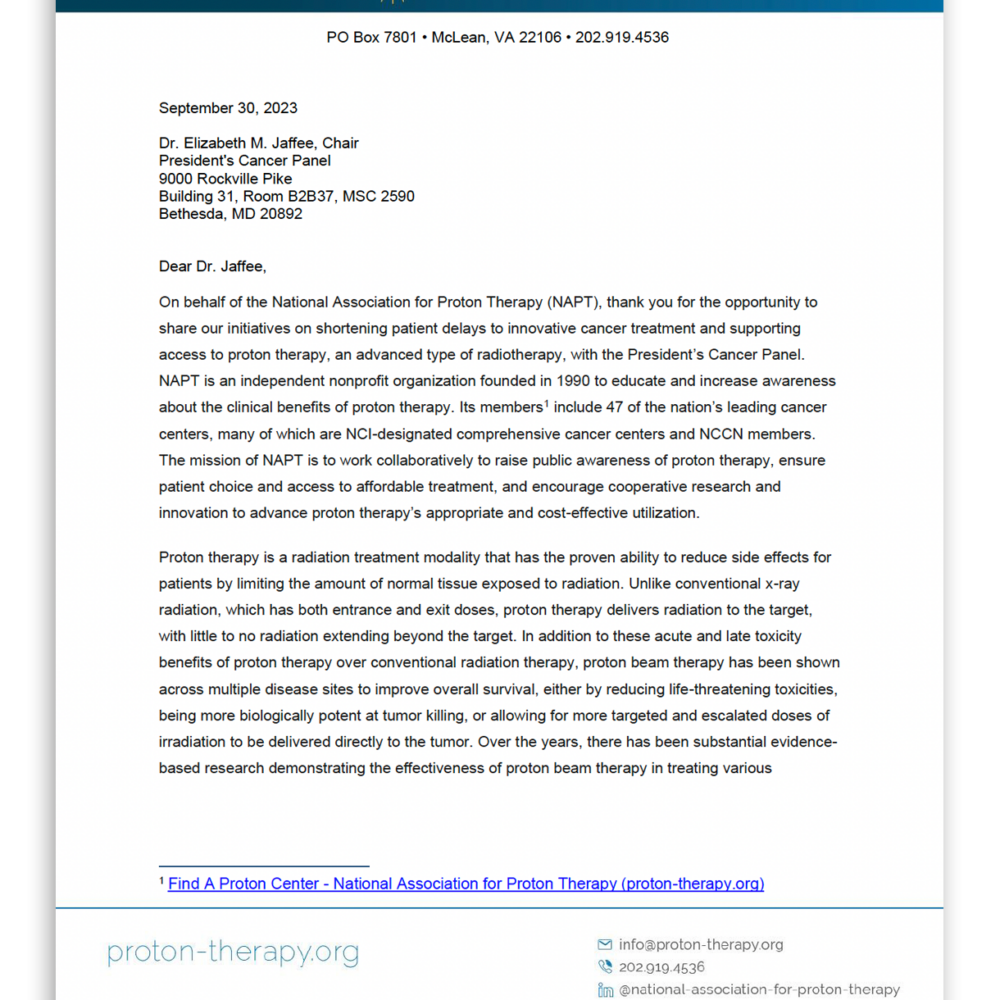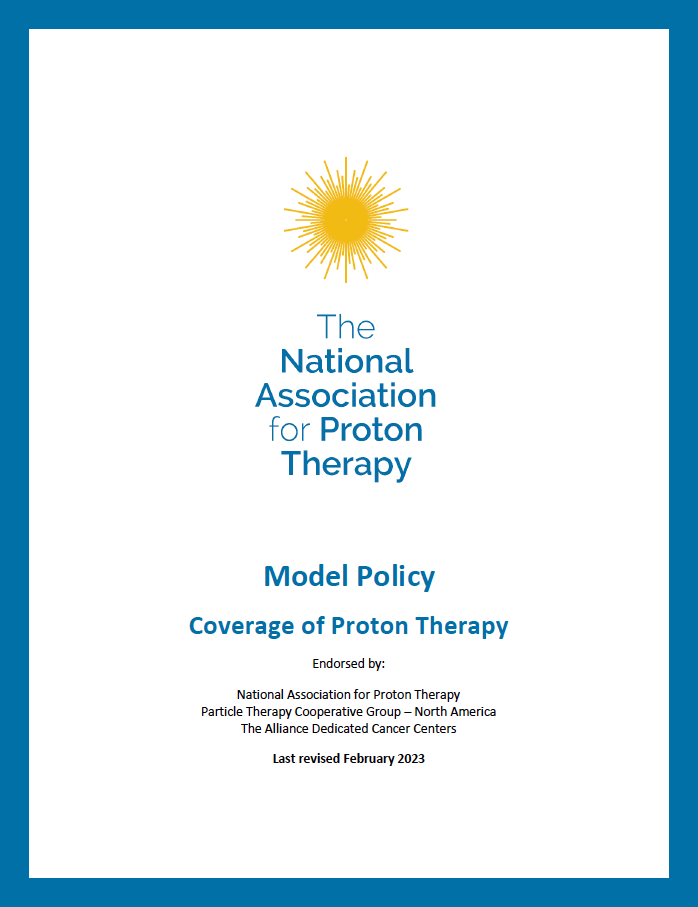What is proton therapy?
Proton therapy delivers high doses of radiation directly to a tumor, sparing nearby healthy tissue. This pinpoint accuracy has been shown across multiple disease sites to improve overall survival – either by reducing life-threating toxicities, being more biologically potent at tumor killing, or allowing for more targeted and escalated doses of radiation.
Unlike conventional X-ray radiation, proton therapy is more targeted – better sparing patients from debilitating and costly side effects.
Because of its reduced toxicity to healthy tissue, proton therapy is ideal for tumors close to critical organs or when combined with other treatments like chemotherapy and immunotherapy.
Proton therapy is the optimal treatment option for children with cancer as it limits radiation exposure to healthy, growing tissue.
With cancer survivorship at an all-time high, reducing side effects, hospitalizations, and secondary cancers is critical in supporting cancer patients and their caregivers. Targeted therapies – like proton therapy – allow radiation oncologists to deliver gentler treatments that also give patients the best short and long-term outcomes.






